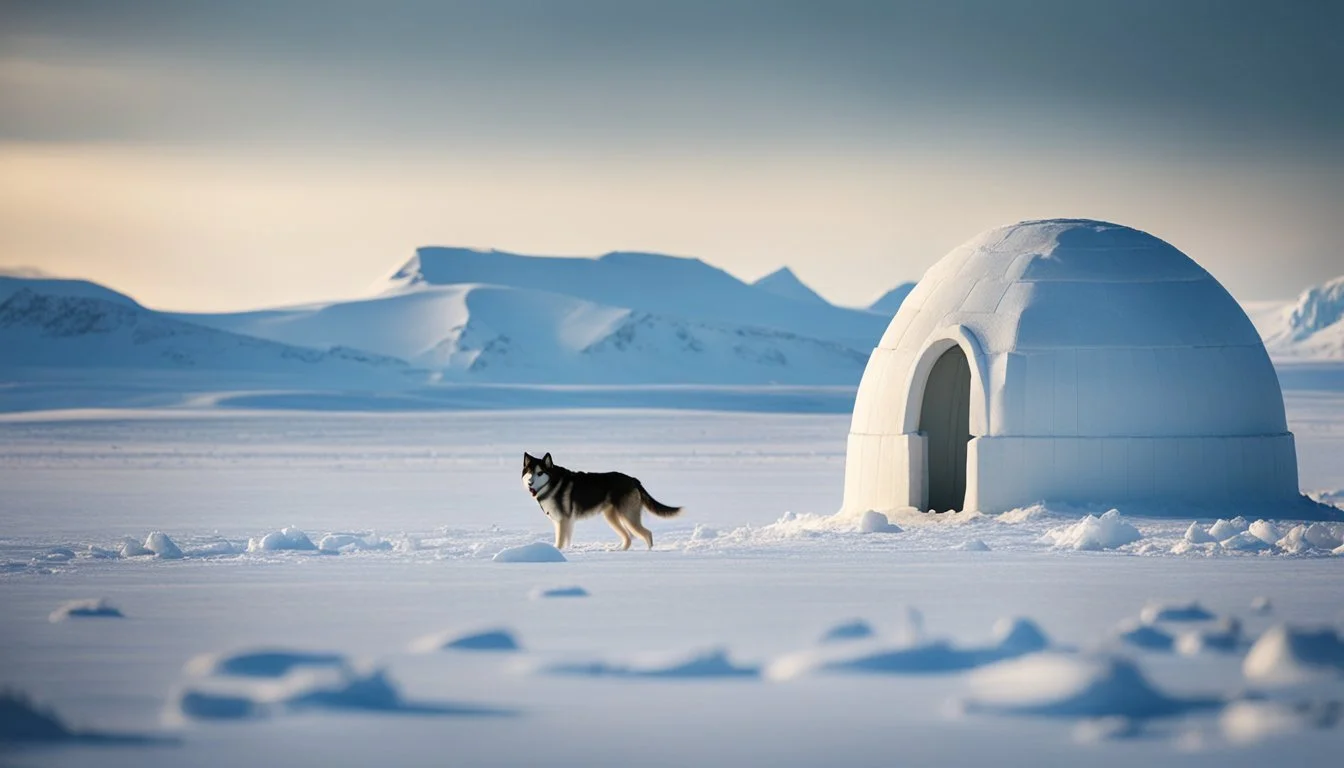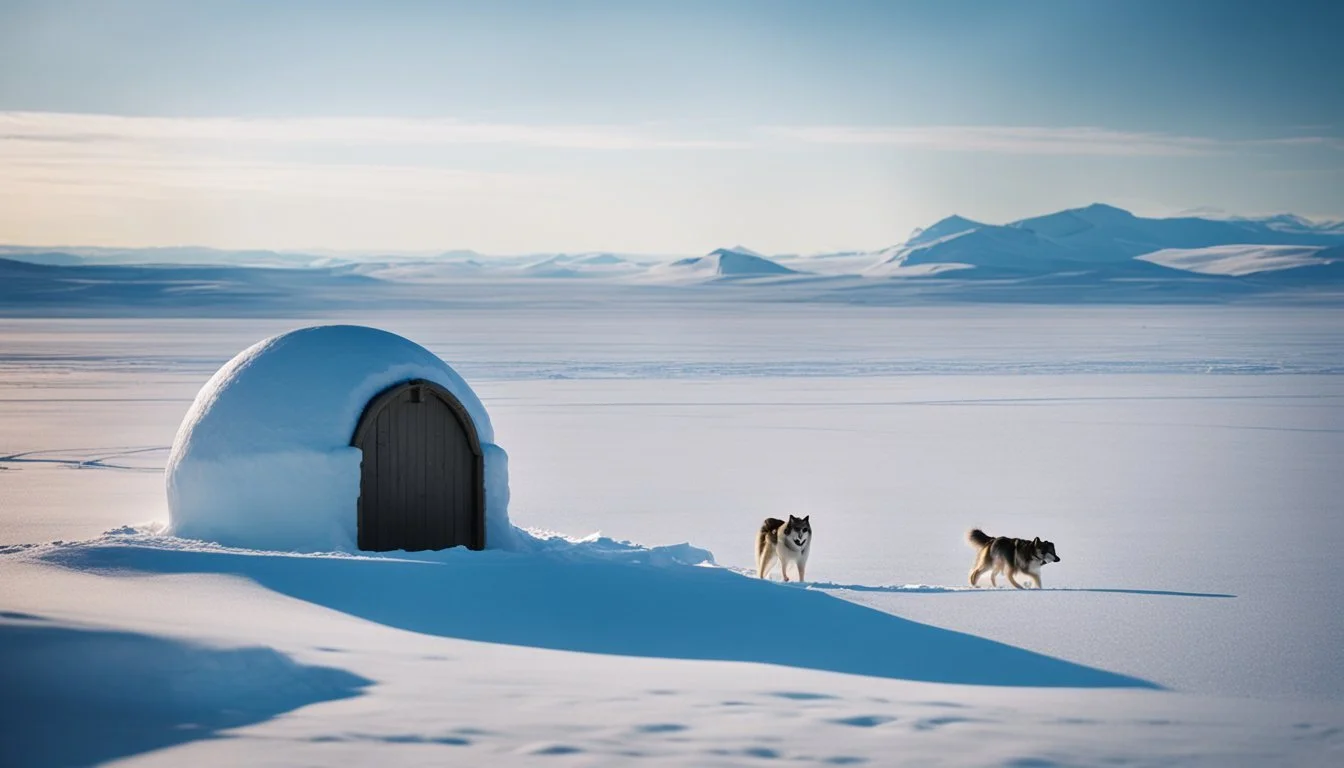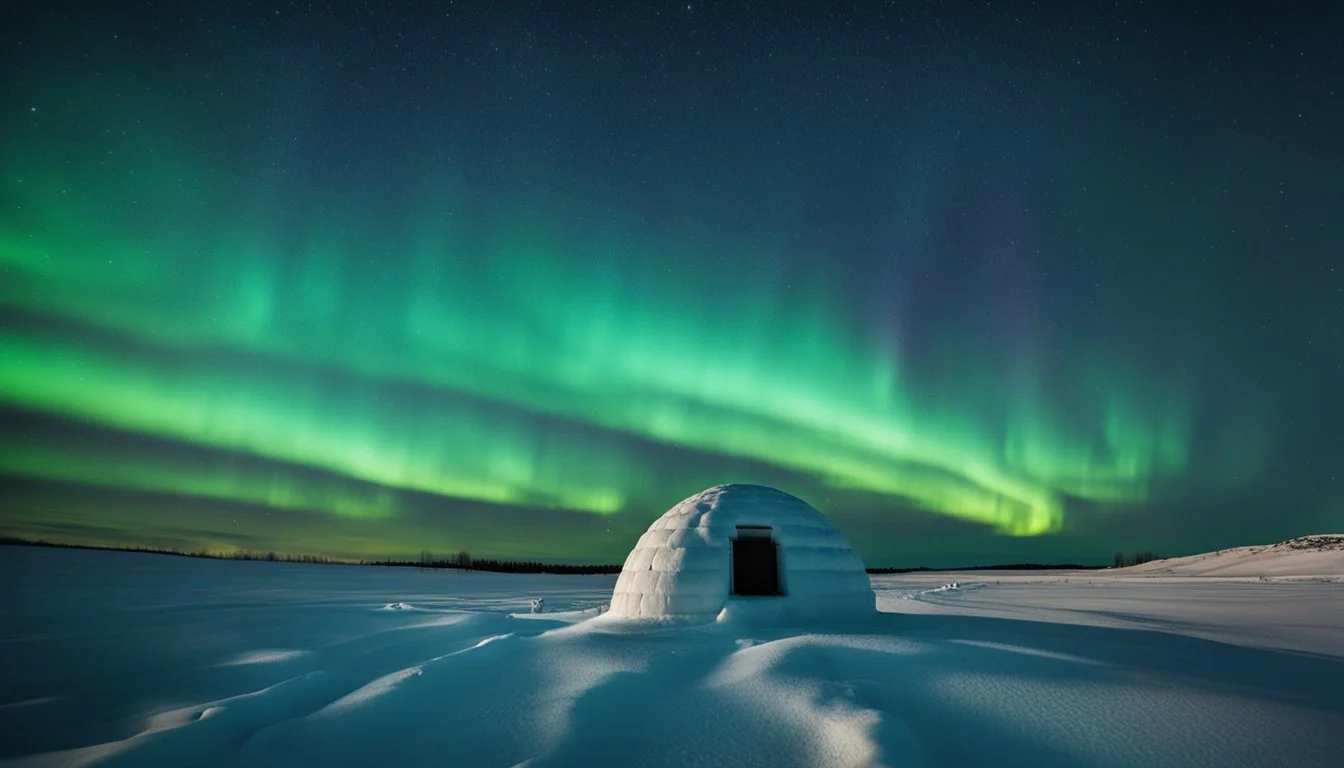Staged Reality Blurs Truth in Pioneering Documentary Nanook of the North
"Nanook of the North" stands as a groundbreaking film in cinema history, often hailed as the first documentary ever made. Released in 1922, Robert Flaherty's work captured the harsh life of an Inuit family in the Canadian Arctic. The film's legacy, however, is marred by controversy due to its staged and manipulated scenes, challenging the very definition of documentary filmmaking.
Flaherty's approach blurred the lines between reality and fiction. He reconstructed traditional Inuit practices that had already been abandoned, dressed his subjects in outdated clothing, and even staged dramatic scenes for the camera. This manipulation raises questions about authenticity and representation in documentary films.
The impact of "Nanook of the North" extends far beyond its initial release. It shaped public perceptions of Inuit culture and influenced documentary filmmaking techniques for decades to come. The film's complex legacy continues to spark debates about ethical considerations in documentary production and the portrayal of indigenous peoples in media.
The Genesis of 'Nanook of the North'
'Nanook of the North' emerged from Robert J. Flaherty's fascination with the Canadian Arctic and its indigenous inhabitants. The film's creation blended authentic Inuit experiences with staged elements, setting the stage for future documentary filmmaking.
Robert J. Flaherty's Vision
Robert J. Flaherty, an explorer and filmmaker, embarked on several expeditions to the Canadian Arctic between 1910 and 1916. These journeys sparked his interest in documenting Inuit life. Flaherty's initial footage, shot during his third expedition, was accidentally destroyed by fire.
Undeterred, he returned to the Arctic in 1920 with improved equipment and a refined vision. Flaherty aimed to capture the essence of Inuit culture through the lens of a single family. He chose Allakariallak, an Inuk hunter, to portray the film's protagonist, "Nanook."
Inuit Life and the Arctic Landscape
The harsh Arctic environment served as both backdrop and character in Flaherty's film. He focused on traditional Inuit practices, showcasing hunting techniques, igloo construction, and daily survival skills.
Flaherty's approach involved a mix of observation and reenactment. He often asked his subjects to perform tasks that were no longer common practice, aiming to preserve what he saw as a vanishing way of life. This blend of authenticity and staged scenes would later spark debates about documentary ethics.
The film captured stunning visuals of ice fields, blizzards, and the austere beauty of the Quebec tundra. These images introduced global audiences to the challenging conditions faced by Arctic indigenous peoples.
Cinematography and Production Techniques
Robert Flaherty's pioneering approach to filming "Nanook of the North" laid the groundwork for future documentary techniques. His methods blended observational footage with staged scenes, creating a unique visual style.
Behind the Camera
Flaherty used a Bell & Howell hand-crank camera to capture the harsh Arctic environment. This equipment choice proved challenging in the extreme cold, often requiring the filmmaker to warm the camera next to his body.
Flaherty's cinematography emphasized wide shots to showcase the vast landscapes. He also employed close-ups to capture intimate moments of Inuit life. The filmmaker developed footage on-site, allowing him to review and reshoot scenes as needed.
Staging Reality
While aiming to document Inuit culture, Flaherty frequently staged scenes for dramatic effect. He directed Nanook and his family to perform traditional activities that were no longer common practice.
The famous igloo-building sequence was carefully orchestrated. Flaherty had a larger-than-normal igloo constructed with one side removed to allow for interior filming. This approach enabled him to capture detailed shots of the building process and family life inside the structure.
Flaherty's staging extended to hunting scenes. He asked the Inuit to use traditional weapons instead of guns, presenting a romanticized version of their lifestyle for the camera.
Cultural and Ethnographic Context
"Nanook of the North" emerged during a period of intense fascination with indigenous cultures. The film aimed to capture Inuit life before traditional practices disappeared.
Inuit Traditions and Way of Life
The Inuit people have inhabited the Arctic regions for thousands of years. Their culture revolves around hunting, fishing, and gathering. Igloos, kayaks, and dog sleds are iconic elements of their material culture.
Inuit social structures emphasize community cooperation and sharing. Extended families often live together, pooling resources to survive harsh Arctic conditions.
Traditional Inuit spiritual beliefs view the natural world as alive with spirits. Shamans play important roles as mediators between human and spirit realms.
Salvage Ethnography and Representation
Salvage ethnography aimed to document cultures believed to be vanishing. This approach influenced how "Nanook" portrayed Inuit life.
The film presented a romanticized view of "primitive" Inuit culture. It ignored modern adaptations and focused on traditional practices, some of which were staged.
This representation raised ethical questions about accuracy and consent. Critics argue it reinforced stereotypes of indigenous peoples as exotic "others".
Despite controversies, "Nanook" sparked interest in Inuit culture. It inspired future ethnographic films and discussions on cultural representation in media.
Key Characters and Narrative
The central figures of "Nanook of the North" embody the traditional Inuit way of life. Their experiences and interactions form the backbone of the film's narrative, showcasing both the harsh realities and moments of joy in the Arctic.
Nanook and His Family
Nanook, portrayed by Allakariallak, is the film's protagonist. He's depicted as a skilled hunter and provider for his family. Nyla, presented as Nanook's wife, plays a supporting role in their daily activities.
The film follows this family unit as they navigate life in the unforgiving Arctic environment. Scenes show Nanook demonstrating his hunting prowess and survival skills, such as building an igloo and fishing through ice.
Flaherty's portrayal aimed to capture the essence of Inuit family life, though it's important to note that some relationships were staged for cinematic effect.
The Tales of Survival and Joy
"Nanook of the North" weaves a narrative of survival interspersed with moments of levity. The film showcases the challenges faced by the Inuit in their harsh environment, from hunting seals to battling extreme cold.
Despite these hardships, the film also captures joyful moments. Scenes of family interactions, playful behavior, and community gatherings paint a picture of resilience and contentment.
Flaherty's narrative choices aimed to present a romanticized view of Inuit life. While based on real experiences, many scenes were reenacted or staged to fit the director's vision of an "untouched" Arctic culture.
Controversies and Debates
'Nanook of the North' sparked intense discussions about authenticity in documentary filmmaking and the ethics of representation. The film's impact continues to influence debates in cinema and anthropology.
The Blurring Lines Between Documentary and Fiction
Robert Flaherty's 'Nanook of the North' blurred the boundaries between documentary and fiction. The film presented staged scenes as reality, including a famously fabricated igloo hunt. Flaherty directed his subjects to perform outdated practices for the camera, prioritizing dramatic effect over accuracy.
This approach raised questions about the nature of truth in documentary film. Critics argue that Flaherty's methods misrepresented Inuit culture and daily life. Supporters contend that his artistic choices captured a broader cultural truth, even if individual scenes were staged.
Ethical Implications and Criticism
The film's portrayal of Inuit people has faced significant criticism. Flaherty's romanticized depiction of "primitive" life ignored contemporary Inuit realities and perpetuated harmful stereotypes.
Ethical concerns arose regarding the exploitation of indigenous subjects. Flaherty's relationship with the Inuit community, particularly his affair with an Inuit woman, further complicated the film's legacy.
Critics argue that 'Nanook' set a problematic precedent for ethnographic filmmaking. It reinforced colonial perspectives and exoticized indigenous cultures for Western audiences. This criticism has led to broader discussions about power dynamics in documentary production and representation of marginalized communities.
Reception and Impact on Film Industry
"Nanook of the North" received widespread acclaim upon its release, captivating audiences and critics alike. The film's innovative approach and immersive portrayal of Inuit life left an indelible mark on documentary filmmaking.
Critical Acclaim and Box Office Success
"Nanook of the North" premiered to enthusiastic reviews in 1922. Critics praised Flaherty's intimate portrayal of Inuit culture and his ability to capture the harsh Arctic environment. The film's box office success surprised many, as documentaries were not typically commercial draws at the time.
Audiences were fascinated by the glimpse into a seemingly exotic way of life. The film's popularity extended beyond North America, finding success in Europe as well. Its commercial triumph helped establish documentaries as a viable genre for theatrical release.
Influence on Future Documentaries
Flaherty's work set a new standard for documentary filmmaking. His approach of living among his subjects and capturing their daily lives influenced generations of filmmakers. The film's use of narrative techniques to enhance storytelling became a blueprint for future documentaries.
"Nanook" bridged the gap between pure observation and dramatic storytelling, much like the works of Méliès and Griffith had done for fiction films. This blend of reality and staged elements sparked debates about authenticity in documentaries that continue to this day.
The film's legacy is complex. While it faced criticism for its staged scenes, its impact on shaping the documentary genre is undeniable. "Nanook of the North" remains a key reference point in discussions about ethnographic filmmaking and representation in non-fiction cinema.
Legacy and Modern Perspectives
"Nanook of the North" continues to shape discussions on documentary ethics and representation of indigenous cultures. Its influence extends beyond filmmaking into broader cultural conversations.
Preservation of Culture and Changing Perceptions
The film's portrayal of Inuit life, though staged, inadvertently preserved aspects of traditional culture. It captured practices and customs that were rapidly changing due to outside influences.
Some indigenous communities view the film as a valuable historical record, despite its inaccuracies. It provides a glimpse into a way of life that has largely disappeared.
Critics argue that the film perpetuated harmful stereotypes. It presented a romanticized, oversimplified view of Inuit culture to Western audiences.
Modern viewers often approach "Nanook" with a more critical eye. They recognize its historical significance while acknowledging its problematic elements.
The Role in Indigenous Media Landscape
"Nanook" sparked conversations about representation in media. It highlighted the need for indigenous peoples to tell their own stories.
Many indigenous filmmakers now create works that challenge the legacy of "Nanook." They offer more authentic portrayals of their cultures and experiences.
Indigenous-led productions aim to reclaim narrative control. They present nuanced, contemporary views of their communities.
Film festivals and media initiatives now prioritize indigenous voices. This shift allows for diverse perspectives in documentary and narrative filmmaking.
The ongoing dialogue around "Nanook" continues to influence how indigenous stories are told and received in modern media.
Related Developments Beyond the Documentary
The influence of "Nanook of the North" extended far beyond the realm of documentary filmmaking. Its impact resonated through commercial partnerships and artistic expressions across various media forms.
Commercial Distribution and Partnerships
Revillon Frères, a French fur company, played a crucial role in funding "Nanook of the North." This partnership opened doors for commercial distribution. Pathé Exchange, a major film distributor, acquired the rights to release the film in the United States.
The success of "Nanook" sparked interest from other businesses. Companies saw potential in sponsoring similar projects that could promote their products or services. This trend paved the way for branded content and sponsored documentaries.
Sir William Mackenzie, a Canadian railway magnate, supported expeditions that combined filmmaking with commercial interests. These ventures aimed to document remote regions while also exploring business opportunities.
Connection to Other Art Forms and Media
"Nanook of the North" inspired artists across different disciplines. Painters and sculptors created works based on the film's iconic images. The movie's portrayal of Inuit life influenced fashion designers, who incorporated elements of traditional Arctic clothing into their collections.
Musicians composed scores inspired by the film's themes. Some even created entire albums dedicated to the Arctic landscape depicted in "Nanook." Theater productions adapted the story for the stage, bringing the film's characters to life for live audiences.
The film's visual style influenced photographers and other documentarians. Its approach to capturing "exotic" cultures became a template for future ethnographic studies, both in film and print media.







